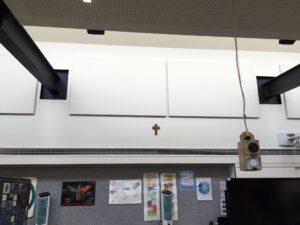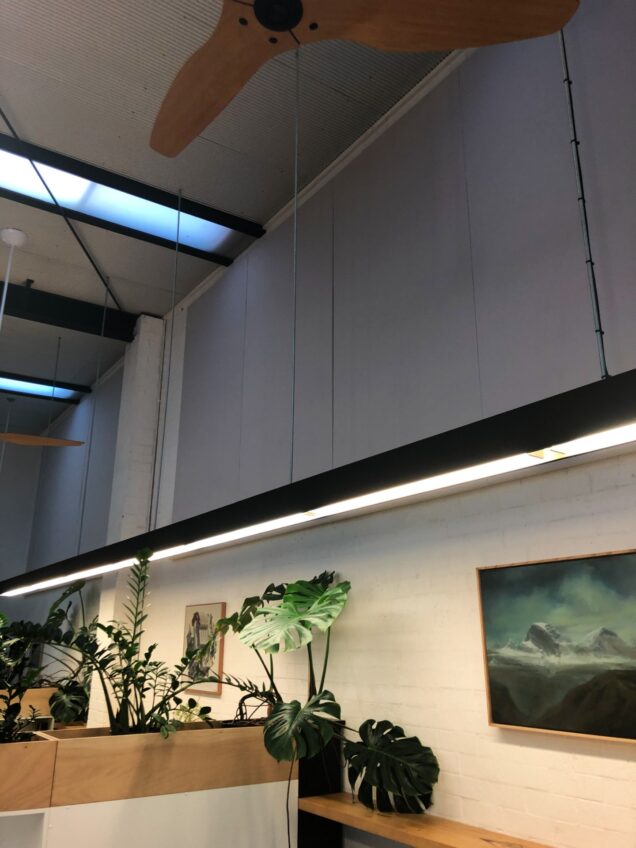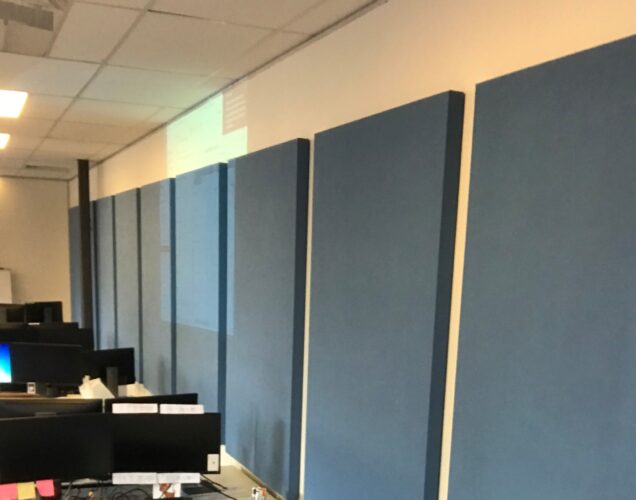 Open workspaces come in many forms, but they have something in common. They have a reputation for poor acoustic quality and privacy. Poor acoustics can affect the well-being and productivity of staff. With a strategy that matches room use and the correct acoustic materials or treatments, acoustic quality can be improved based on the needs of the organisation.
Open workspaces come in many forms, but they have something in common. They have a reputation for poor acoustic quality and privacy. Poor acoustics can affect the well-being and productivity of staff. With a strategy that matches room use and the correct acoustic materials or treatments, acoustic quality can be improved based on the needs of the organisation.
Open plan spaces are defined as large rooms where the length and width are much greater than height, and full height partitions are not used. Commonly used to provide flexibility in layout, adaptable workstation arrangements and simpler HVAC designs. The absence of full height walls allows for better lighting control and the potential for task ambient lighting. (Furniture-integrated lighting)
Working Space Acoustics
 In working spaces productivity can be enhanced by reducing distraction from intruding speech.
In working spaces productivity can be enhanced by reducing distraction from intruding speech.
To achieve acoustic privacy in open plan workspaces there are several parameters that need to be considered.
- Sound at source treatment. Using partial height acoustic screens between workstations.
- Desk top acoustic dividers. Placed to control localised sound sources.
- Sound absorbing finishes. Applied to ceilings, walls, or other surfaces.
- Acoustic Panels, Art panels, Fabric Panels, Fibre panels, acoustic pin boards. Fixed to available wall areas, or internal columns.
- Ceiling Clouds, and acoustic baffles. Installed in ceiling areas to reduce sound reflection and transmission from the ceiling area.
The assessment of an area’s requirements needs to consider the following.
Speech effort: How people talk in a space to maintain privacy, conversation levels at non disturbing levels, room use, background machinery and HVAC noise.
Privacy requirement: Understanding the privacy required, freedom from intruding speech, conversations remaining private.
Distance form source to receiver: The impact of distance on work locations attenuation voice levels.
Partial height barriers: The influence these have on attenuating voice transfer.
Room background noise levels: Masking created by machinery and HVAC operation.
Acoustic Clouds and Baffles Help Maintain Open Plan
Sound absorbing panels, acoustic baffles and clouds offer a versatile way to introduce acoustic materials without restrictions to the principles of open plan workspaces.
Acoustic panels clouds and baffles need to be made of porous materials to be good sound absorbers. When positioned correctly they will reduce the noise energy in a space. Dense, hard surfaces reflect sound, causing echo and slow decline or decay of noise energy. Acoustic panels and baffles will absorb direct sound energy and reduce sound reflected off any hard surfaces.
Ceiling-mounted they have both sides exposed to maximise noise absorption. These treatments can be in the form of elegant lines and soft shapes suspend horizontally from the ceiling.
Ceiling clouds or acoustic baffles create a modern interior design feature. Their appearance and function provide both sound absorption and innovative aesthetics, allowing for design flexibility in architectural, spaces. Available as stock products or as bespoke designs allowing for creativity in space fit out.
In open plan workspaces and office refit, acoustic baffles and clouds give, a cost effective and retrofittable treatment. Installation can integration with lighting, HVAC, and general mechanical services.



Acoustic Baffles and Clouds
Sontext Australia
38C Merri Concourse Campbellfield Victoria Australia 3061
Mob +61 (0)428 100 300 T +61 (03) 9432 2733 F+61 (03) 9432 2533
Sontext UAE
Central 1 Building, Level 2. Dubai World Trade Centre,
PO Box 114142, Dubai UAE
+9714-523-2683
Sontext Limited
27 Old Gloucester Street
LONDON WC1N 3AX
UNITED KINGDOM
DECRA-ACOUSTICS (USA)
101 North Tyron Street Suite 112, Charlotte, NC 28246
Phone: 980-434-2174
Email: Sales@decra-acoustics.com
